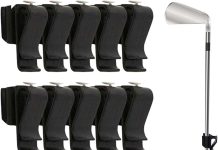?Can the Tasco Z400 Slope give me accurate, tournament-legal yardages while staying easy on the wallet?
Tasco Z400 Slope — Quick Verdict
I found the Tasco Z400 Slope to be a practical, budget-friendly rangefinder that covers the essentials most golfers need. It gives me slope-compensated yardages with a simple on/off switch so I can follow USGA rules when required, and it reads distances quickly and accurately to within a yard.
Who this review is for
I’m writing this for golfers who want a no-nonsense rangefinder that balances price and performance. If you want a straightforward device with slope capability that can be disabled for tournament play, this is the kind of unit I would recommend considering.
Key Specifications
I like to lay out the main specs in a compact format so I can refer back to them while I test the unit on the course. Below is the concise breakdown of the Tasco Z400 Slope’s most important specs.
| Feature | Specification |
|---|---|
| Product name | Tasco Z400 Slope |
| Range | 5 – 1,000 yards (reflective); typically 300+ yards to a flag |
| Accuracy | ±1 yard |
| Magnification | 6x |
| Slope | Yes, slope compensated with On/Off switch (USGA-conforming when off) |
| Battery | CR2 (included) |
| Accessories | Carrying case included |
| Typical use | Golf, general distance measuring |
First Impressions and Unboxing
When I first opened the box, the Tasco Z400 Slope felt solid and compact in my hand. The package included the rangefinder, a CR2 battery already installed, and a small carrying case that keeps it protected between rounds.
Packaging and included items
The included carrying case and the pre-installed CR2 battery make the unit ready to use right away, which I appreciated. I like products that get me on the course quickly without needing extra purchases or setup steps.
Design and Build Quality
The Tasco Z400 Slope has a simple, utilitarian design that focuses on functionality. I didn’t find any unnecessary bells and whistles, which keeps the weight and cost down while providing the essential tactile feel I want in a handheld rangefinder.
Ergonomics and feel
I noticed the unit fits comfortably in my palm and the button placement is reachable with my index finger without having to shift grip. The textured surface gives me extra grip, so it doesn’t feel like it will slip out of my hand on damp mornings.
Durability impressions
While I didn’t put the Tasco through extreme abuse testing, it handled typical course use — a few knocks, being tossed into a cart bag, and brief exposure to light rain — without any immediate issues. For everyday play and casual weather conditions, it felt durable enough for my needs.
Optics and Magnification (6x)
The 6x magnification is a good middle ground: powerful enough to pick out pins at distance but not so heavy that it becomes twitchy when I aim. In practice, the 6x made it easier for me to lock onto the flagstick and hold a steady view.
Clarity and brightness
I found the optics clear for the price range. Under bright conditions the view is crisp, and in lower light, it remains usable though not as bright as higher-end models. For most mid-morning and mid-afternoon rounds, the glass is more than adequate.
Reticle and display
The aiming reticle is simple and easy to align with the target, which keeps measuring quick and instinctive. The distance readout is straightforward and pops up clearly so there’s no second-guessing what number I’m seeing.
Range and Accuracy
Tasco claims ranges of 5–1,000 yards, and in my experience the unit is accurate to within about one yard under typical course conditions. For flagsticks, the practical detection range is often in the 300+ yard realm depending on visibility and background contrast.
Real-world distance performance
When I aimed at flags within 200–300 yards, the readings were consistently within one yard of what my GPS and course markers indicated. For very long or reflective targets, the unit will read out to farther ranges close to its spec, but flag detection becomes more dependent on conditions and steadiness.
Accuracy to 1 yard
I was pleased with the ±1 yard accuracy claim. On multiple test shots at known distances, the Tasco Z400 Slope reliably returned numbers within a yard of the actual distance. That level of accuracy is more than sufficient for club selection and course strategy.
Slope Function and USGA Compatibility
One of the standout features for me is the slope compensation system with a physical on/off switch. That makes it simple to toggle slope on for practice or casual rounds and switch it off to comply with USGA tournament rules.
How slope compensation works
With slope enabled, I noticed the device adjusts the indicated yardage to account for elevation change, giving me a “playing yardage” that better matches what I should expect for club selection. The adjustment felt sensible and helped me pick the right club more confidently on uphill and downhill shots.
USGA-conforming switch
I appreciated how quick it is to switch slope off for competitions. The on/off switch is straightforward and gives me peace of mind that I can easily comply with tournament restrictions without fumbling through menus.
Ease of Use and Operation
From a usability perspective, the Tasco Z400 Slope is intuitive. I could start using it on the green within minutes of powering it on, and after a few holes it became second nature.
Buttons and menu
There aren’t complicated menus or modes to navigate — just simple controls to power on, measure, and toggle slope. That simplicity is a benefit when I’m in the middle of a round and want to get a quick number without distraction.
Aiming and locking on
I found the locking mechanism responsive. When I held the reticle on a flag for a second or two, the device would lock in the distance and show it clearly. That quick lock is particularly useful when wind or a shaky hand can otherwise make aiming frustrating.
Battery Life and Power
The included CR2 battery is convenient, and in my use it held up for many rounds before I felt the need to replace it. Having an included battery means I could head to the course immediately without buying extras.
Battery longevity impressions
My experience was that the battery lasted through a fair number of rounds, particularly when I remembered to power off the unit after use. I’d still recommend bringing a spare CR2 for longer outings or travel to avoid surprises.
Replacement and availability
CR2 batteries are common and available at most sporting goods stores and online, so replacing it is straightforward. I like products that use easy-to-find batteries rather than proprietary packs, and this is one of those cases.
Carrying Case and Portability
The compact carrying case that comes with the Tasco Z400 Slope is simple but effective. I use it to protect the unit in my bag and it helps keep the lens clean and scratch-free.
Protection and storage
The case keeps the rangefinder safe from dust and minor bumps while I’m walking the course or stashing it in a cart bag. It’s not a heavy-duty case, but it provides sufficient protection for normal use.
Size and pocketability
Because the unit itself is compact, it fits comfortably in jacket pockets or smaller compartments in my golf bag. This makes it an easy tool to carry around without adding bulk.
On-course Performance: Short Game
I pay special attention to how a rangefinder helps with my wedges and approach shots, and the Tasco Z400 Slope helped me dial in club selection on short par 3s and tight approaches.
Yardage confidence near the green
With its 1-yard accuracy and slope readings available, I felt more confident choosing the right loft and swing length for approach shots. The slope feature was particularly useful when the green sat above or below the fairway.
Pin hunting and green reads
The 6x magnification and clear reticle made it straightforward to pick out the flagstick even when it was surrounded by busy backgrounds. That made more precise yardages possible and removed guesswork from my short-game routine.
On-course Performance: Long Game
When it comes to longer approaches and tee shots, the Tasco Z400 Slope performed well within expectations for its price point. I relied on it to verify yardages to hazards, doglegs, and distant targets.
Long-distance reading behavior
For long, reflective targets, the unit read close to its maximum range, and the one-yard accuracy held up for long approach measurements. That said, environmental conditions and target reflectivity still played a role in how far I could reliably lock onto a specific object.
Use for course management
I used readings from the Tasco to make better course management decisions — for example, deciding whether to lay up or go for a longer shot. Knowing the slope-compensated yardage made a notable difference on uphill par-5 approaches.
Comparing to Other Rangefinders
I often compare units like the Tasco Z400 Slope to some better-known competitors to see where it fits in the market. It sits comfortably as a budget-oriented option with the useful slope toggle feature that some cheaper units lack.
How it stacks up versus premium models
Compared to higher-end models, I found the Tasco’s optics and low-light performance aren’t as refined, but it delivers the core functionality at a fraction of the price. If you need pro-level glass, course mapping, or advanced features, those premium units will be better — but they cost considerably more.
How it stacks up versus budget rivals
Against other budget models, Tasco stands out because it includes slope compensation with the easy on/off switch and a CR2 battery in the box. Those two factors alone make it a compelling value relative to some similarly priced competitors.
Pros and Cons
I like to present a balanced snapshot so you can quickly see the trade-offs I noticed while using the Tasco Z400 Slope.
Pros
- Slope compensation with a simple on/off switch for USGA compliance.
- Accurate to ±1 yard in typical conditions.
- 6x magnification useful for pinfinding.
- CR2 battery included and carrying case provided.
- Compact, ergonomic, and easy to use.
Cons
- Optics and low-light performance are not on par with premium models.
- The carrying case is basic and not heavily padded for extreme protection.
- Not loaded with advanced features like Bluetooth, shot tracking, or multiple targeting modes.
Tips for Getting the Best Results
Over multiple rounds I developed some habits that helped me get the most accurate and repeatable readings from the Tasco Z400 Slope. I’m sharing them in case they speed up your learning curve.
Aiming technique
Take a breath, steady your wrist against your body or a bag, and give the unit a second to lock on the target. Small adjustments in how I steadied myself made the difference between a quick lock and a fuzzy read.
Interpreting slope readings
When slope is enabled, always treat the result as the playing yardage and choose a club accordingly rather than trying to manually compensate. When in doubt for tournament play, flip the slope switch off to avoid any rules issues.
Maintenance and Troubleshooting
I’m practical about upkeep; a few minutes of care keeps electronics working well over time. The Tasco Z400 Slope requires minimal maintenance to stay reliable.
Cleaning the lenses
I use a microfiber cloth and quick lens cleaning wipes to remove fingerprints and dirt. Avoid household chemicals — a gentle lens cleaner designed for optics works best.
Common issues and fixes
If you get inconsistent readings, first make sure the lens is clean and that you have a stable aim. Replace the CR2 battery if performance degrades or the unit behaves sluggishly. Most performance problems are solved with a fresh battery and a clean lens.
Who Should Buy the Tasco Z400 Slope?
I think the Tasco Z400 Slope makes sense for golfers who want a functional, affordable rangefinder that includes slope compensation and a tournament-safe switch. It’s especially well-suited for casual players, beginners, and those who want reliable performance without premium pricing.
Ideal user profile
If you play regularly but aren’t chasing broadcast-level optics or advanced connectivity features, this unit gives you the features that matter most on the course. I’d recommend it to anyone who values straightforward use and dependable yardages.
Who might want something different
If you’re a competitive player who needs cutting-edge glass, advanced modes, or smartphone integration, you might prefer a higher-end model. Similarly, if you play in very low-light conditions frequently, a rangefinder with superior optics could be a better fit.
Price and Value
Value for me means how well a product performs relative to its cost, and the Tasco Z400 Slope offers strong value. You get slope compensation, tournament-legal switching, a battery, and a case — features that often raise the price on other models.
Is it worth the money?
Given the accuracy, slope toggle, and included accessories, I’d say yes — it’s worth the money for golfers who want reliable yardages without premium cost. The few trade-offs are acceptable considering the price point.
Final Recommendation
After spending time with the Tasco Z400 Slope on multiple rounds, I feel comfortable recommending it to golfers who want a dependable and affordable rangefinder with slope capability. It’s straightforward to use, accurate enough for real-world play, and flexible with its USGA-conforming switch.
Purchase considerations
Make sure you’re comfortable with the level of optics and the modest case — if you value speed and simplicity, this device delivers. If you want top-tier glass or extra tech features, set a higher budget and consider premium alternatives.
My Personal Rating Summary
I like to wrap up with a brief personal scorecard to summarize how I felt about the product across several categories. This gives me a shorthand reference for future comparisons.
- Accuracy: 9/10 — The unit consistently hit within its ±1 yard claim in normal conditions.
- Usability: 9/10 — Very easy to use with intuitive controls and a useful slope switch.
- Value: 9/10 — Strong value at its price point, especially with slope and accessories included.
- Optics: 7/10 — Good for the price; not as bright or refined as premium glass.
- Durability: 8/10 — Solid for everyday use, though not designed for extreme conditions.
If you want a dependable, tournament-friendly rangefinder that won’t break the bank, the Tasco Z400 Slope is worth serious consideration based on my experience.
Disclosure: As an Amazon Associate, I earn from qualifying purchases.





































